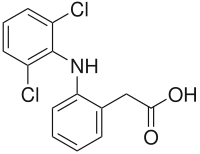
Association between habitual dietary and lifestyle behaviours and skin autofluorescence (SAF), a marker of tissue accumulation of advanced glycation endproducts (AGEs), in healthy adults
Sign Up to like & getrecommendations! Published in 2017 at "European Journal of Nutrition"
DOI: 10.1007/s00394-017-1495-y
Abstract: PurposeAdvanced glycation endproducts (AGEs) are produced endogenously and also enter the body during the consumption of AGEs present in heat-processed food. It is unknown whether AGEs of dietary origin accumulate within the body of healthy… read more here.
Keywords: saf; endproducts ages; glycation endproducts; skin autofluorescence ... See more keywords

Skin autofluorescence is associated with vascular complications in patients with type 2 diabetes.
Sign Up to like & getrecommendations! Published in 2018 at "Journal of diabetes and its complications"
DOI: 10.1016/j.jdiacomp.2018.06.009
Abstract: AIMS Tissue accumulatedadvanced glycation end products (AGEs) can be evaluated non-invasively by an autofluorescence reader as skin autofluorescence (skin AF)·The present study investigated whether skin AF is associated with diabetic micro- and macroangiopathies in Japanese… read more here.
Keywords: patients type; skin autofluorescence; japanese patients; type diabetes ... See more keywords

For diabetic type 1 patients, the skin autofluorescence predicts ulcers and amputations.
Sign Up to like & getrecommendations! Published in 2020 at "Journal of diabetes and its complications"
DOI: 10.1016/j.jdiacomp.2020.107808
Abstract: We searched whether the accumulation of Advanced Glycation End-products (AGEs), reflected by the skin autofluorescence (SAF), could predict diabetic foot ulcers (DFUs) during the long-term follow-up of people with type 1 diabetes. During year 2009,… read more here.
Keywords: type patients; diabetic type; skin autofluorescence; type diabetes ... See more keywords

P1078IMPACT OF A MEDIUM CUT-OFF DIALYZER ON SKIN AUTOFLUORESCENCE IN HAEMODIALYSIS PATIENTS
Sign Up to like & getrecommendations! Published in 2020 at "Nephrology Dialysis Transplantation"
DOI: 10.1093/ndt/gfaa142.p1078
Abstract: Introduction: Advanced glycation end-products (AGEs) are middle-sized uraemic toxins that accumulate in haemodialysis (HD) patients due to increased production, impaired excretion and insufficient removal. Previous studies have reported that the use of a medium cut-off… read more here.
Keywords: haemodialysis patients; skin autofluorescence; medium cut; dialyzer ... See more keywords

Noninvasive Skin Autofluorescence of Advanced Glycation End Products for Detecting Ossification of the Posterior Longitudinal Ligament in the Thoracic Spine
Sign Up to like & getrecommendations! Published in 2022 at "Spine"
DOI: 10.1097/brs.0000000000004516
Abstract: Study Design. A single-center prospective observational study. Objective. The aim was to clarify the usefulness of assessing advanced glycation end products (AGEs) by noninvasive skin autofluorescence in patients with ossification of the posterior longitudinal ligament… read more here.
Keywords: skin autofluorescence; opll; opll opll; age ... See more keywords

Skin autofluorescence as tool for cardiovascular and diabetes risk prediction
Sign Up to like & getrecommendations! Published in 2022 at "Current Opinion in Nephrology and Hypertension"
DOI: 10.1097/mnh.0000000000000835
Abstract: Purpose of review Advanced glycation endproducts (AGE) have an important role in the development of chronic complications in diabetes mellitus and in renal failure. Skin autofluorescence (SAF) is a simple noninvasive optical technique to estimate… read more here.
Keywords: autofluorescence tool; tool cardiovascular; skin autofluorescence; cardiovascular diabetes ... See more keywords
Higher skin autofluorescence in young people with Type 1 diabetes and microvascular complications
Sign Up to like & getrecommendations! Published in 2017 at "Diabetic Medicine"
DOI: 10.1111/dme.13280
Abstract: To test the hypothesis that non‐invasive skin autofluorescence, a measure of advanced glycation end products, would provide a surrogate measure of long‐term glycaemia and be associated with early markers of microvascular complications in adolescents with… read more here.
Keywords: autofluorescence young; skin autofluorescence; higher skin; microvascular complications ... See more keywords

Skin autofluorescence predicts major adverse cardiovascular events in patients with type 1 diabetes: a 7-year follow-up study
Sign Up to like & getrecommendations! Published in 2018 at "Cardiovascular Diabetology"
DOI: 10.1186/s12933-018-0718-8
Abstract: BackgroundAdvanced glycation end-products play a role in diabetic vascular complications. Their optical properties allow to estimate their accumulation in tissues by measuring the skin autofluorescence (SAF). We searched for an association between SAF and major… read more here.
Keywords: mace; year; adverse cardiovascular; skin autofluorescence ... See more keywords

Clinical Significance of Skin Autofluorescence in Elderly Patients With Long-Standing Persistent Atrial Fibrillation
Sign Up to like & getrecommendations! Published in 2019 at "Cardiology Research"
DOI: 10.14740/cr885
Abstract: Background Recent clinical studies have demonstrated the importance of skin autofluorescence as a cardiovascular risk factor. However, data regarding the relationship between skin autofluorescence and atrial fibrillation are limited. The aim of this study was… read more here.
Keywords: atrial fibrillation; skin autofluorescence; elderly patients; patients long ... See more keywords

Comment on Foussard et al. Skin Autofluorescence of Pregnant Women With Diabetes Predicts the Macrosomia of Their Children. Diabetes 2019;68:1663–1669
Sign Up to like & getrecommendations! Published in 2020 at "Diabetes"
DOI: 10.2337/db19-1120
Abstract: Macrosomia is one of the most frequent complications in women with hyperglycemia in pregnancy, and advanced glycation end products (AGEs) may play a role in fetus growth. We were very interested by the article by… read more here.
Keywords: foussard skin; pregnant women; comment foussard; skin autofluorescence ... See more keywords

The Bright Side of Skin Autofluorescence Determination in Children and Adolescents with Newly Diagnosed Type 1 Diabetes Mellitus: A Potential Predictor of Remission?
Sign Up to like & getrecommendations! Published in 2022 at "International Journal of Environmental Research and Public Health"
DOI: 10.3390/ijerph191911950
Abstract: Skin autofluorescence (SAF) is a noninvasive method reflecting tissue accumulation of advanced glycation end products (AGEs). We investigated whether, in newly diagnosed children and adolescents with type 1 diabetes (T1D), this surrogate marker of long-term… read more here.
Keywords: skin autofluorescence; newly diagnosed; remission; saf ... See more keywords